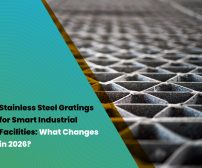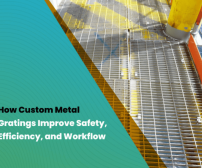
A conveyor belt is designed to transport materials, supplies, and components, effortlessly and efficiently to save time, cost, and energy. This material handling system has conveyor material looped over two motorized pulleys. Depending on the industrial use, conveyor belts are available in 8 varieties. This article shares their application and use. Read on to find out more.
8 Major Types of Conveyor Belts:
Roller Bed Conveyor Belts
The surface is created from rollers that match the weight or speed of the products that are being transported. This belt is ideal for transporting products quickly over long distances due to reduced friction. Further, items are uploaded on this material handling system by using gravity, as manual loading causes mechanical damage to the rollers.
APPLICATION: It’s used for sorting, packing, sorting, inspecting, assembling, and transporting products. Thus, is actively used in the post office for sorting letters and parcels, and at the airport for baggage handling.
Flat Belt Conveyors
Constructed from different materials, this versatile belt is used for internal transportation, i.e., products are transported within a manufacturing facility. It uses several powered pulleys to form a single. continuous flat belt loop made from synthetic or natural fabric (nylon, polyester). Optional features are nose bars and center drives, and top transport products from end to end which can also be helpful when used with modern platform trolley for transporting goods.
APPLICATION: Used in industrial applications such as assembly lines and wash down. If fitted with a suitable belt, it can transport soft, small, or irregularly shaped products without damaging them.
Modular Belt Conveyors
Constructed from hard plastic, this conveyor system is a single loop of uncountable interlocked pieces. These interlocks can be easily removed or replaced separately, and hence the entire belt doesn’t get discarded. Further, the belt is highly resistant to abrasive and sharp objects and is easier to wash, maintain and repair. This system is used for transporting items that go around corners, across incline and decline surfaces, or in straight lines. Plastic modular belts can be easily customized at low costs and without compromising the belt tracking method.
APPLICATION: It’s used in the food processing industry due to its adjustable interlock mechanism which allows retention or drainage of fluids, and can be easily cleaned. The plastic version is used for detecting metal.
Cleated Belt Conveyors
It features vertical cleats (barriers) in its design. Differently shaped cleats tightly secure the loose material as it travels through declines and inclines while maintaining constant spacing between items.
Types:
Inverted Capital “T” supports perpendicular cleats to the surface of the belt. It allows flexibility and support to transport delicate items like food products and packaged items.
Forward-Leaning Capital “L” has a wide base to transport light and medium-weight bulk items on steeper inclines. Some cleats have curved faces for scooping granules.
The inverted “V” cleat is 2 inches high for a troughing effect that endures heavy impact. Thus, it transports heavy and abrasive items.
Lugs and Pegs can be easily positioned to move selective items or hold products in place. Thus, this cleat is used for transporting washed vegetables and fruits. They
Curved Belt Conveyors
With curved cleats, this belt transports items around corners optimizing available floor space or making tight transfers. They can be turned up to a 180° angle.
APPLICATION: Used in bag handling systems for changing items during direction transmission.
Incline/Decline Belt Conveyors
Such a conveyor system features a gear motor, center drive, and a single or double nose. It has a rough surface that allows transporting items up/down.
APPLICATION: This cleated belt is useful for transporting items to different elevations while tightly securing them in place to prevent falling off the belt. Additionally, they are fit for increasing gravity flow systems
Sanitary and Washdown Conveyors
This conveyor system is designed to endure sanitary procedures of washing, cleaning, and sterilization as per industry norms. They have a rugged surface that is easy to clean. Thus, are used in the pharmaceutical and food industries.
APPLICATION: It transports items with extreme temperatures, from the freezer or furnace. It can handle greasy and wet items, hence bigger washdown conveyors with flat wire belts are used for offloading crates and oil drums from ships.
Specialty Conveyor Belts
Fiberglass Conveyor Belts are used in processes with extreme temperatures.
Metal Nub Conveyor Belts are designed for transporting machines and their parts.
Narrow-width Conveyor Belts are used for transporting small items.
Back-lit Conveyor Belts are fitted with a light fixture to assist with quality control.
Vacuum Conveyor Belts create suction to keep light-weighted products like leaflets and sheets on the assembly line despite high speed and incline.
Magnetic Conveyor Belts transports iron and its products. It holds these items in place with electromagnets that are installed equidistant on the conveyor’s bed.
Sandwich Belt Conveyors use two face-to-face belts for securely transporting items at steep inclines or a vertical movement.
Conclusion:
Seeking suitable conveyor belts to improve the assembly line? EarthTech is a trusted name in designing, manufacturing, and installing custom industrial belts. Talk to experts, now!!!






